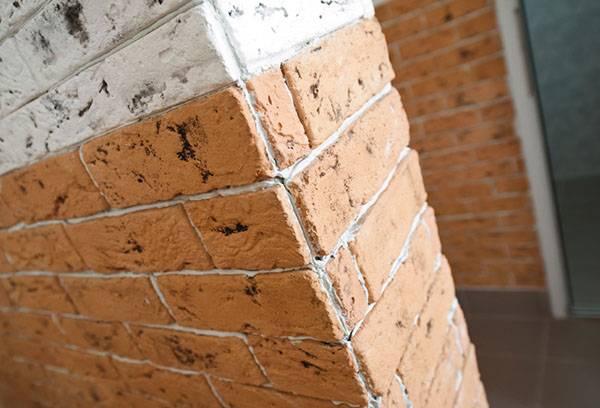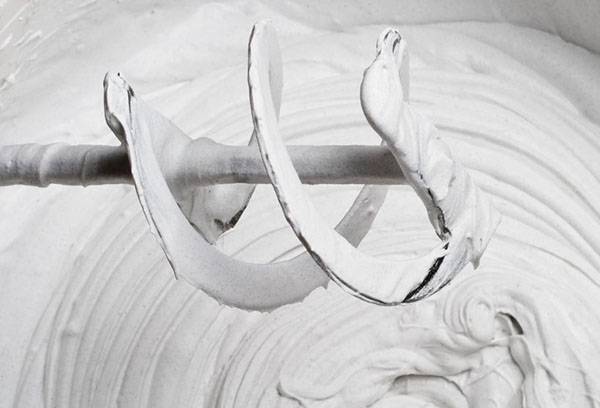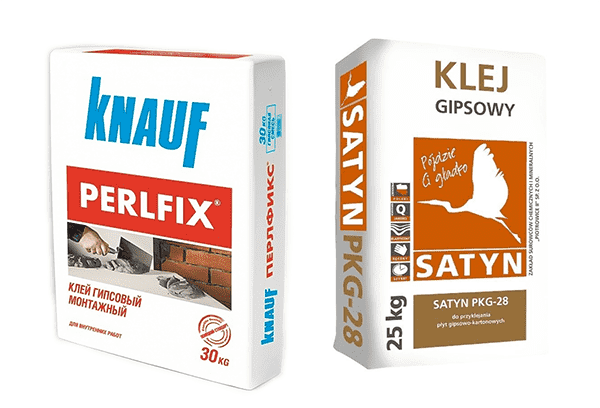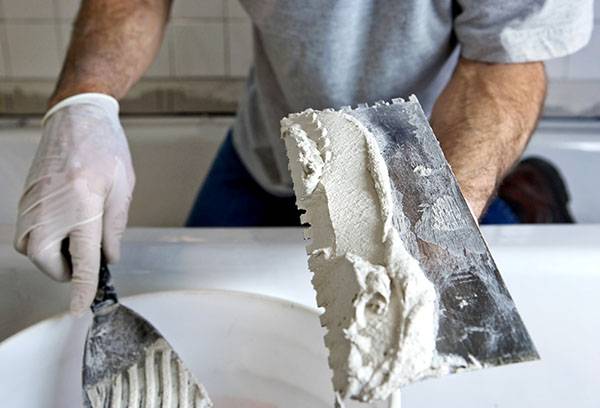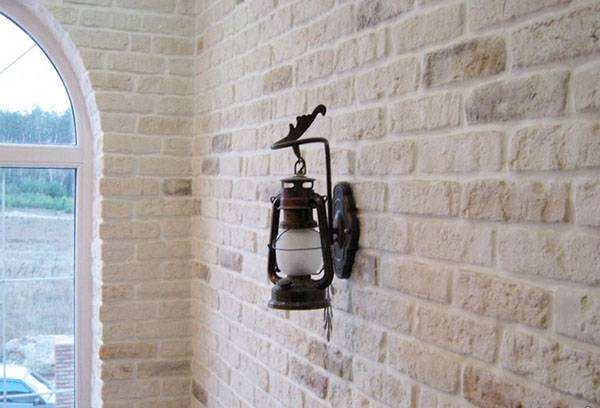What kind of adhesive is needed for gypsum tiles?
It seems that the world of interior design will never run out of new ideas. Tired of regular wallpaper? Here are canvases with 3D drawings. Don't want to put up wallpaper at all? Then you can try decorative plaster. Do you want your room to look simpler and more elegant? Brickwork would be an excellent solution. We are, of course, not talking about real brick. To create this design, gypsum tiles are used that imitate decorative stone or brick. You can hire workers to do these repairs or do them yourself. But for this you will have to understand some theoretical issues. First of all, choose a special adhesive for gypsum tiles. Because without the right product you cannot get a good result.
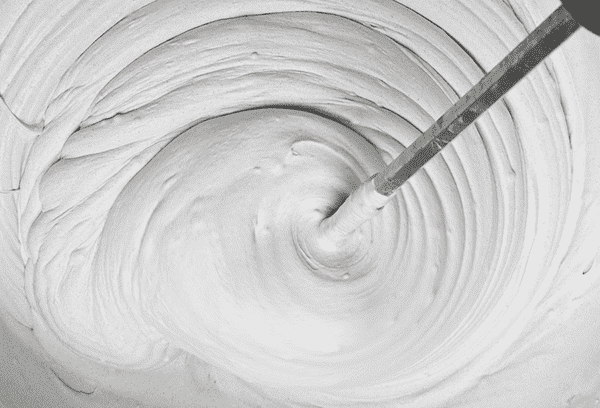
Compound
If you are going to glue gypsum tiles to concrete, brick, plaster or drywall (and this is probably the case, because the listed surfaces are the most common), then you need to purchase special gypsum glue. This is a general name; in fact, there are a large number of products that are used for interior decoration. They differ in compositional features.
- Dry mixtures mainly consist of building alabaster and plasticizers. The latter are needed so that the glue sets and hardens faster.
- At the same time, you should carefully read the composition - cheaper products are usually diluted with sand. Naturally, such adhesive for gypsum tiles should not be used, because it is unreliable.
- And if you doubt the honesty of the manufacturer, then you should know that a direct indication of the presence of sand in the composition is not the only way to determine the quality of the product. The boxes should always indicate the amount of water needed to dilute the glue. If, according to the manufacturer, one kilogram of powder requires less than three hundred milliliters of water, this is clearly alabaster diluted with sand.
Gypsum glue is not the only option. You can also use liquid nails or ceramic tile adhesive to secure gypsum tiles. True, liquid nails are convenient to use only for a small area. And a product for ceramic tiles is more expensive than a product specifically designed for gypsum.
Specifications
Let's consider the technical characteristics of all the means that can be used to fix gypsum tiles.
- Gypsum dry mixes. It is not without reason that a special substance was developed for tiles made to resemble bricks. The fact is that due to their porous structure, such tiles absorb moisture in large quantities. And the liquid in a diluted composition is needed for the correct, rapid and uniform hardening of the cement. So it is not at all suitable for repairs with such tiles. But the gypsum mixture was developed specifically for such cases. It is characterized by a high hardening speed.
- Liquid glue or liquid nails. The main advantage of these products is that they are sold ready-made and in convenient packaging. In addition, they are no less reliable, and they are easier to apply than gypsum glue (using it makes it difficult to keep the room clean). But the cost of ready-made compounds is much higher. And they are usually sold in small quantities, so they are used in small areas.
- Reactive glue. This product consists of the glue itself and a catalyst, thanks to which the hardening process will begin. The product is suitable for application to any surface and is very convenient to use. But it hardens faster than all of the above. So it should only be used by experienced workers.
What to glue decorative stone to?
So, which product is more suitable for fixing decorative stone?
- You can use classic cement mortar, which is used for other types of tiles. But due to the specific structure of the stone, cement will take a very long time to harden. It is also not particularly elastic.
- Liquid nails are also a universal remedy. But this is an expensive option. It is better to use them if you need to attach a small number of tiles.
- Reactive adhesive is suitable for all materials and surfaces. It's easy to apply. But it hardens very quickly. If this is your first time gluing tiles, then this is not a suitable remedy; any delay will ruin the work.
- Gypsum glue is the best option for beginners. Special glue for decorative stone hardens faster than cement, but allows you to work at a relaxed pace. It is suitable for almost all surfaces.
Glue consumption per 1 m2 and at 1 m3
Another important thing to know when starting a renovation is how much glue you will need to apply. Calculations must be made in advance.
Firstly, this will help at the purchasing stage - no one wants to spend money on extra packaging, because if applied correctly, gypsum tiles will last you a very long time.If you buy too little product, this will also become a problem - you will have to urgently buy the missing amount, and glue of the same brand may not be available in the store. It is highly undesirable to use products from different brands together.
Secondly, calculations are also important directly during the installation process - if you choose glue that you will dilute yourself, you need to remember that the finished composition hardens quite quickly. And if you prepare a lot of solution, it will be wasted.
So, on average, 1 cubic meter of decorative stone requires 43 kilograms of dry glue. Approximately five kilograms of gypsum powder are required per 1 square meter. Moreover, the amount of substance depends on the size of the tile. The standard layer is six millimeters. But if you are gluing large tiles (the side of which is more than twenty-five centimeters), then the adhesive layer should be thicker.
Manufacturers
Let's look at the main manufacturers of adhesives for decorative stones.
- PLUSFIX. One of the most inexpensive options, as it is cement mixed with sand. It can only be applied to concrete and brick walls. It is also only suitable for small tiles (with sides less than twenty-five centimeters).
- PERFLIX – this is a more preferable option, since the glue is made of gypsum and special additives that increase its elasticity and drying speed. The prepared solution must be used within half an hour. Glue is sold in bags weighing thirty kilograms. And this amount will require fifteen liters of water.
- Satyn PKG-28 - a better option for those who are laying tiles for the first time.Due to the addition of special substances, the glue is very plastic. And the solution remains useful longer than the remedy described above - as much as fifty minutes. Sold in bags weighing twenty-five kilograms.
- Plaster of Paris - another mixture of gypsum and minerals. The finished solution should be used within half an hour, and it dries on the wall faster than the previously listed products - within a day. A package weighing thirty kilograms will require approximately eighteen liters of water.
Application rules
When using glue, you need to follow a few simple rules and strictly follow the sequence of actions.
- Start by thoroughly cleaning the surface. We are talking, of course, about traces of the old coating (wallpaper, glue, etc.), and about dirt and dust.
- Dry the walls thoroughly.
- It would be a good idea to apply a primer. Some surfaces strongly absorb moisture. Accordingly, they will pull it out of the applied glue, which is why it will harden worse.
- You can only work in a room where the temperature does not drop below plus five degrees.
Advice
Due to the fact that stone-look gypsum tiles imitate natural material, all specimens are different. Therefore, it is worth laying out several tiles on the floor in advance in order to imagine how individual sections will look on the wall.
Next you need to start preparing the glue.
- You need to use water at room temperature.
- Immediately pour the entire amount of water into a bucket or basin (calculate it, following the manufacturer’s recommendations).
- Stir the water with a stick or an unplugged mixer to create a vortex.
- Slowly pour the powder into this funnel.
- Stir the glue thoroughly. It is better to use a construction mixer, as there is always a risk of lumps appearing.
- Do not prepare a lot of glue at once - remember that it becomes unusable very quickly.
First, apply a thin layer of adhesive to the wall. And then onto the tiles themselves. Place the tiles against the wall and press them firmly with your hands.
Conclusion
Gypsum tiles that imitate bricks and stones are an interesting solution for renovation. To decorate a room with this design, you don’t have to turn to specialists. You can glue the tiles yourself. But it is important to choose the right materials, including the adhesive composition. Preference should be given to special gypsum glue.

